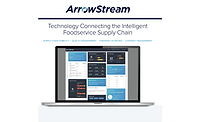Exclusive interview: Q&A with McCloud Services, on how to recover from a poor pest management plan

Food Safety Strategies recently was able to talk to Anna Berry, BCE - training manager and entomologist, McCloud Services, about how to recover from a poor pest management plan.
Liz Parker: What are some ways that businesses/facilities can recover from poor pest management plans during COVID-19?
Anna Berry: COVID-19 continues to impact the food industry in so many different ways. Some businesses and facilities shut down completely to reduce the risk to their employees. While others have operated with a minimal staff, conducting only the most essential operations, or continued business as usual with safety measures in place. Yet, many are still facing the economic impact of reduced customers weeks or months later. From a pest management perspective, we had most large food facilities keep their pest management program in place, but cutback on quality audits and oversight visits from management, to minimize risk. This is a smart way to handle it because it allows the pest management program to be maintained but reduces the amount of extra people involved. One of the first things I’d recommend a food facility implements when going back to business, is have an assessment completed by the pest management company to identify any additional risks or changes that may affect their pest management program. If they shut down a portion of the facility, ask for a more detailed inspection of that area, as there may be unknown risks developing. If you know what’s going on with other businesses in the neighborhood, share that with your pest management professional (PMP), as it could impact your business. For example, if a restaurant closed during the pandemic, they probably did not continue using pest management services. Any pests associated with that location can threaten your location, as well.
LP: Why do some pest management plans fail?
AB: Pest management plans can fail for any number of reasons, but the most common reason is that the plan does not match the facility. Meaning, if we have a facility with high risks for pests, the plan should cover all those risks and ensure enough time and resources are devoted to performing the plan successfully. If the plan is sold inadequately, and the PMP cannot allocate the time or resources to it based on how it was sold, the plan will fail. It is not necessarily because of the PMP, but because the plan was never right for that facility in the first place. There is rarely a one-size fits all plan for commercial food facilities and when we try to put the same plan on unique facilities, they typically fail. Plans may also fail because it wasn’t executable by the PMP, perhaps due to inexperience. Food facilities are sensitive accounts, and those who work in them must be aware of all the intricacies that lead to success.
LP: Do most plans fail quickly, or over time?
AB: Most plans fail over time. If a pest problem is not identified early, it can slowly morph from an easy to fix to a very difficult problem. Failed plans are often those that are stagnant. If we are not assessing the success of a plan over time, then we don’t know what improvements to make. It’s rare that the same plan used 5 years ago is the right solution for the present, so we must think of plans as dynamic, changing as the facility, the risks, and the processes change. If we’re on top of that, then we can make easy changes that will positively impact the facility. If we are not, then tiny problems will slowly turn into big ones. Although, a plan can certainly fail quickly if it is not executed correctly.
LP: How do Site Risk Assessments work?
AB: A good site risk assessment has a trained and experienced PMP evaluate a facility and identify all the risks associated with it. They will explore the entire facility, make note of neighboring properties, consider the commodities being processed, and where the final product goes. After assessing all the risks, the PMP will outline what and where those risks are. Perhaps American cockroaches were discovered entering from the sewer or bird droppings were found in a dock receiving area. Perhaps the facility processes flour, putting it at risk for stored product pests. Once risks like these are outlined, the PMP provides the solutions. This is not a commitment of what the program will be but helps the customer to know what solutions can be provided for the risks that were discovered. From that, the customer must decide what solutions bring the most value to their business. A good PMP will identify every risk and solution, not just the ones that are of immediate concern. For example, if we were brought in to perform a site risk assessment on a facility because they were concerned about mice, we would absolutely assess the risks for mice. In addition, we would assess the risks for cockroaches, birds, and other disease-transferring pests. The customer may only settle on rodent-based plans, but at least they’re made aware of the other risks in the facility and potential solutions that can be adopted.
LP: What are some of the best solutions for better pest management plans?
AB: For a solid pest management plan, the partnership between the PMP and client is vital. The customer needs to trust that the PMP is making recommendations in their best interest, and the PMP needs to be well-trained and experienced to make those important recommendations and execute the plan that was agreed upon. When this bond is strong—by both action and communication—the pest management plan will be a success. Pest management plans also must be adaptive and dynamic, and both parties need to push for change when the results aren’t where they need to be. If the customer is expecting certain solutions, that must be communicated so that the PMP can perform to those expectations. If there are limitations for meeting those expectations, the PMP must communicate what they are.
Looking for a reprint of this article?
From high-res PDFs to custom plaques, order your copy today!








